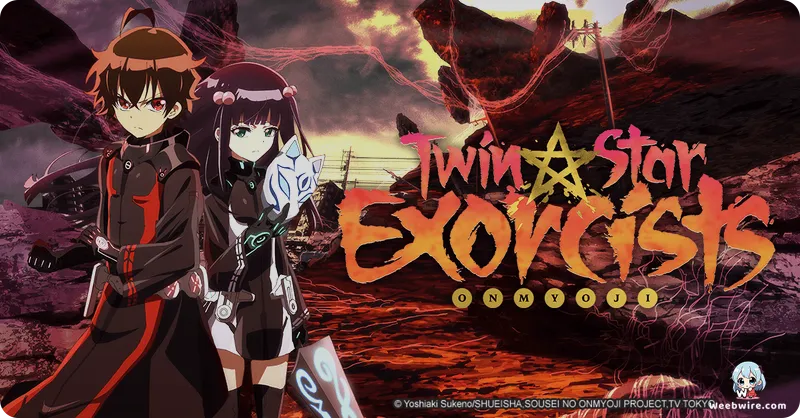The Two Destinies of Twin Star Exorcists: How Studio Pierrot's Anime Forged an Entirely New Canon

The Dual Canon of Twin Star Exorcists
The supernatural saga of Twin Star Exorcists (Sousei no Onmyouji) captivated audiences in the mid-2010s with its potent mix of supernatural battles, sharp comedic timing, and the fated romance between Rokuro and Benio. Yet, beneath the surface of this fan-favorite lies a fascinating production history marked by significant narrative decisions that created a unique split within the series’ canon.
The 2016 anime, helmed by the experienced Studio Pierrot, veterans of long-running shonen like Naruto, stands out as a rare example of an adaptation consciously forging its own path.
The Anime Original Ending (AOE) Decision
The most defining characteristic of the Twin Star Exorcists anime is its bold, early departure from Yoshiaki Sukeno’s original manga. Recognizing that the monthly manga release schedule would inevitably be outpaced by the anime’s production, Studio Pierrot began weaving in original content around the twentieth episode before committing fully to a conclusive anime-original ending (AOE). This pragmatic choice resulted in two fundamentally distinct narratives.
The manga continues as an intricate, sprawling epic, delving deeply into the history of Magano and the mystery surrounding the Miko. In contrast, the anime delivered a faster, self-contained story arc, culminating in an original final confrontation centered on the intense rivalry with Yuuto Ijika and the immediate fate of the titular pair.

These parallel timelines meant the anime introduced entirely new Basara and unique conflicts never explored in Sukeno’s print work. Character development also shifted; for instance, Mayura Otomi played a dramatically different and more central role in the TV series’ final battles than she occupied in the manga at that time. Consequently, fans transitioning from the small screen to the page often experience a profound structural change, effectively enjoying two separate, rich supernatural thrillers built upon the same premise.
Cultural Depth and Symbolic World-Building
Beyond the unique production history, the series is meticulously layered with authentic Japanese culture. The extensive world-building is deeply rooted in Onmyodo traditions and folklore. The very premise, the 'Twin Stars,' symbolizes the balance of Yin and Yang, defining Rokuro and Benio as the destined pairing whose union is meant to produce the Miko, the ultimate spiritual savior capable of cleansing all Kegare (impurities).
Even the nomenclature is symbolic: Rokuro Enmado evokes the King of Hell, Enma, hinting at his destructive power and dark past, while Benio Adashino, signifying 'crimson,' embodies her intense dedication and fierce spirit. The Basara themselves are not mere demons but conscious, highly evolved Kegare, often terrifyingly personalized antagonists due to their strange fixation on human emotions.
Creator Versatility and Lasting Impact
Furthermore, the versatility of creator Yoshiaki Sukeno is evident in this work. Known initially for the highly comedic and lighthearted supernatural parody Binbougami ga! (Good Luck Girl!), Sukeno successfully transitioned to the darker, more emotionally charged, and often tragic themes central to Twin Star Exorcists. While the series retains moments of humor, its focus on trauma, destiny, and responsibility showcases a remarkable range.
The combat system itself, utilizing specific talismans, incantations, and ofuda (purification charms), is a fictionalized but respectful interpretation of historical Onmyodo esoteric cosmology, lending the fantasy battles a grounded, cultural authenticity. Ultimately, despite its non-canonical conclusion, the anime’s visual prowess and complete narrative arc significantly broadened the global readership for the manga, cementing both the animated and printed versions as memorable, yet separate, entries in the modern shonen landscape.
Credits
Twin Star Exorcists
Author
Yoshiaki Sukeno
Cover Art
Yoshiaki Sukeno
Studio
Studio Pierrot
Publisher
Shueisha
Producers





